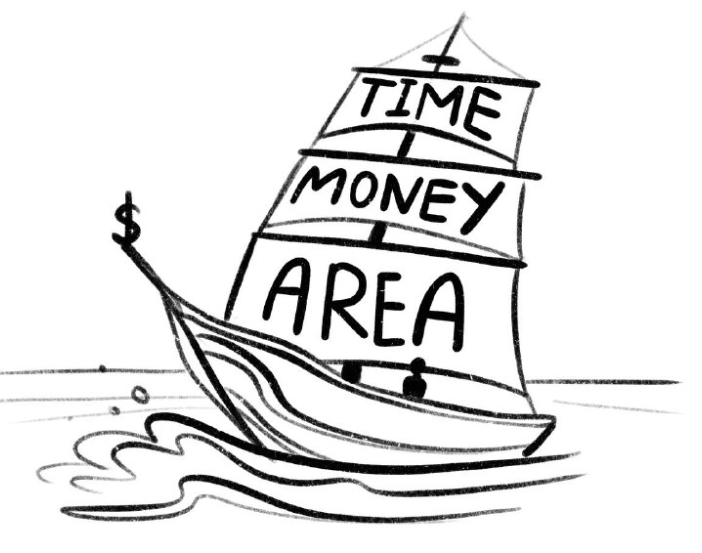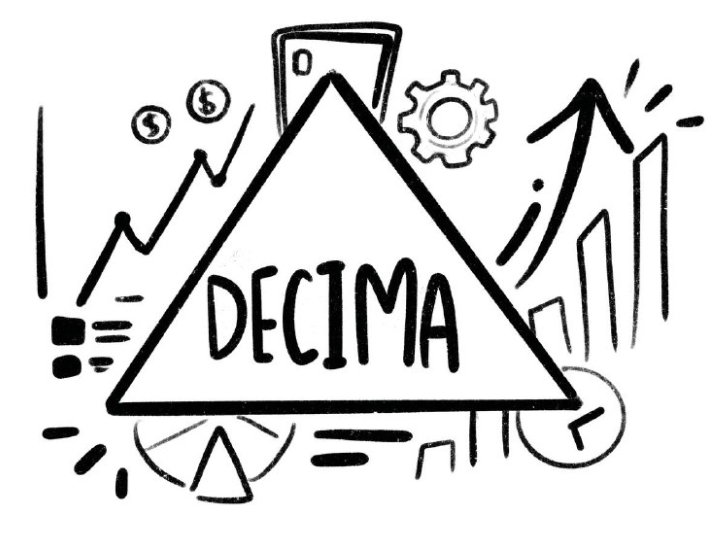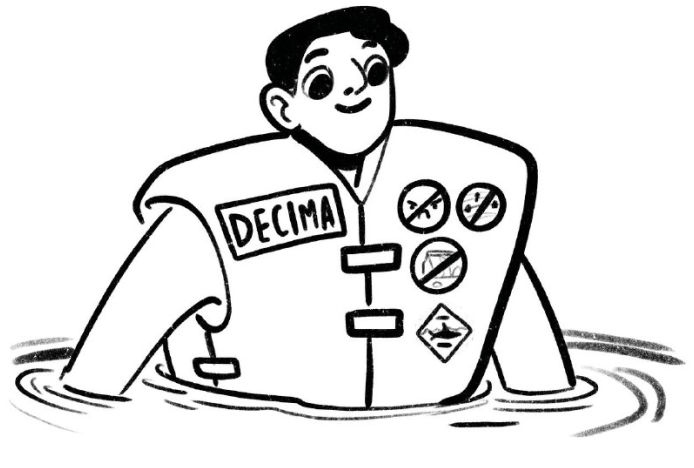How to prove a financial theorem with Decima
“The financial abyss is the deepest of all; one can be falling into it for a lifetime.”
The words of the famous con artist, Ostap Bender, are not recognized in all countries, but their meaning is understood in every language.
Setting the Financial Sail
No matter how many new economic specializations are created or new business methods are developed, for most people, finance remains a Bermuda Triangle. Incidentally, the triangle is perhaps the most complex yet simplest shape in mathematics. Just think about the Pythagorean theorem! Everyone definitely remembers it.
The field of finance is just as mysterious: a chain of sequential events, tasks, and, of course, decisions. However, the path to the end is not as straightforward as the sides of an equilateral triangle.
For example, entrepreneurial activity and finance go hand in hand inseparably. The result in monetary terms directly depends on competent planning and structure.
Imagine you are the captain of a ship sailing through the rough seas of project management. The ship is your project, and you must ensure it doesn’t sink.
This ship has three main sails – time, money, and scope. You can’t just adjust one of them without affecting the others. It’s like trying to lift one corner of the ship while the other two corners sink. The captain’s main task is to keep this triangle in perfect balance.
So, when something goes wrong, the first step is to determine which part of the “triangle” has the problem – time, money, or scope? This helps to understand what needs to be addressed first.
Next comes the most interesting part! You need to decide what can be adjusted and what should be left alone: maybe it’s worth extending the deadlines a bit to stay within the budget. Perhaps some minor features need to be sacrificed to avoid delaying the project. The captain’s task is to maintain the balance of the tricky “project triangle.”

Decima’s Theorem: Proven
Both large and small businesses, whether self-employed or operating in an individual format, require the structuring of work processes. However, it is challenging to focus on all issues simultaneously.
How can employees and equipment be optimally utilized? How can “cash gaps” be avoided? How can project control be maintained if plans need to be changed on the go? How can deadlines be met, responsibilities distributed, or work time organized amid diverse tasks and numerous projects? Why don’t project theorems solve themselves?
They do get solved. But not on their own.
Large companies like MS Project or Oracle Primavera already offer products that address these issues, but accessing their treasures requires significant financial investment.
Decima was created as a module for the electronic financial director. According to its creator, it is much more interesting and complex because it works with reservable resources. Unlike premium-class programs, Decima provides the ability to perform similar calculations almost for free, making them accessible to small businesses.
Decima turned out to be the unique mathematical model that helps solve the problem of the project triangle we discussed earlier. The product with the interval name, addresses tasks where it’s necessary to find a balance between project deadlines, profit, and resources.

Preparing for a financial swim
Imagine you are a business owner who has just discovered the magical world of DECIMA – software that transforms project chaos into an organized symphony of efficiency!
You eagerly open the new application and see a blank canvas, ready to receive and organize your creative ideas. You begin to sketch out the project plan, setting stages, deadlines, and responsibilities, issuing commands to your crew members. Each member of your team receives their part and enthusiastically gets to work.
You track progress from your captain’s bridge, observing the dance of ropes and propellers. You make timely adjustments, redistribute tasks, and the project smoothly moves towards its final chord.
Here, you can share files, comments, and ideas with colleagues. Document version control helps you avoid getting lost in the endless sea of edits and changes.
To avoid running aground financially, Decima developers equipped it with an additional control system: you can easily plan and track the project budget, account for expenses and revenues, and confidently bill clients.
But the most exciting part is the catalogs of materials and goods! You give the command, “All hands on deck,” and summon all the necessary information about specifications, prices, suppliers, and even pirates.
And at the finale of your creative regatta – visualization and presentation! You create 2D and 3D models that leave passengers in awe and prompt competing companies to tighten their financial anchors.

Life Jacket
The creators of Decima endowed it with crucial features, emphasizing simple algorithms and the accessibility of resources in all their manifestations. Even a school student can understand and master Decima.
Despite all the advantages, the creators of the simple program for managing complex projects strongly recommend following basic water safety rules: do not enter the water overheated, do not swim beyond warning signs, beware of monetary icebergs, and avoid areas with investment sharks and financial pirates.

Vladimir Dubrovsky
The simplest program for managing complex projects
When you organize all the processes, you will constantly be seeking more and more ways to apply Decima
$65

We scatter the fog of guesses with the beam of scientific truth.
Thank you!




